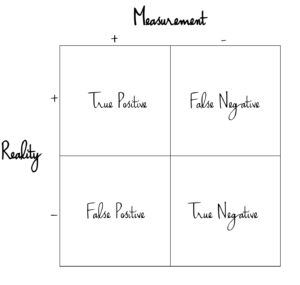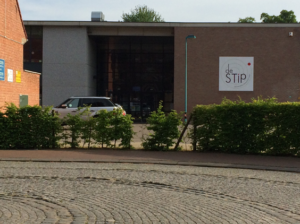Mettre à disposition toute une équipe de collaborateurs pour traiter tant et chaque fois les mêmes problèmes ? Pour traiter des clients frustrés. Et, en général, ne pas réussir à les rendre moins frustrés après l’appel. Et pour les clients à qui nous voulons parler ? Ceux-là n’appellent pas. Et quand ils nous appellent, nous sommes injoignables.
Qu’il faut réduire les coûts ? Eh bien, l’option de supprimer le Service client va de soi, non ? Prenons du recul. Pourquoi, à l’origine, voulions-nous mettre en place un Service client ?
Instiguer l’amélioration continue
Qui d’autre est mieux placé pour identifier les déficiences (des produits et services), que votre collaborateur au Service client ? Il est le premier à savoir lorsque quelque chose ne tourne pas rond. Et lorsque ça tourne mal, c’est lui qui tente le tout pour le tout pour solutionner ‘l’incident’.
Ce genre d’incidents demandent de la ‘gestion d’incidents’ : alerter le reste de l’organisation et ‘s’armer’ pour répondre à l’avalanche de coups de fils de clients insatisfaits (à juste titre). Nous nous préparons pour savoir ce que nous allons dire – et comment. Nous ‘absorbons’ les incidents.
Est-ce alors surprenant d’avoir des collaborateurs stressés ? De les voir passer leur temps avec des conversations que ni eux, ni les clients, veulent ?
Résultat des courses ? La création d’une charge de travail que le Service client ne parvient plus à absorber. Et les clients auxquels nous voulons parler ? Eh bien, vu le temps d’attente croissant, ils finissent par abandonner. Jusqu’à ce que le Service client tire la sonnette d’alarme et perturbe le reste de l’organisation avec une demande pressante de main-d’œuvre.
Le Service client a tellement plus de potentiel ! Et s’ils réagissaient de manière proactive en cas d’incidents, plutôt que de laisser l’initiative auprès des clients ? Qu’ils prennent contact avec le client. Avant même que ce dernier ait l’occasion de nous ‘accabler’.
Eliminer les contacts clients ‘sans valeur’
Mais la situation est pire. Car même quand rien ne ‘foire’, le Service client traite un tas de contacts clients ‘sans valeur’.
Avez-vous déjà compté le nombre d’appels clients concernant des questions simples, auxquelles nous pouvons formuler des réponses simples ? Via d’autres canaux, moins coûteux et souvent bien plus accessibles pour les clients (tel qu’Internet). Avez-vous déjà chiffré toutes les questions que les clients posent, suite à des communications incomplètes ou imprécises ? (Pensez notamment aux factures incompréhensibles aux yeux des clients) Vous seriez surpris !
Votre Service client connaît ces problèmes. Mais souvent ça s’arrête là. Votre organisation, est-elle prête à faire face à ses défaillances ? A établir les causes premières, et à les résoudre dans le fond ? Commencez par mesurer tous les ‘contacts sans valeur’. Et prenez des mesures pour les réduire (à néant).
Fidéliser les clients
Éviter tous les problèmes et n’avoir plus aucun client insatisfait ? C’est une utopie. De nouveaux problèmes surgiront toujours. Et le Service client les détectera en premier. Résignez-vous : les clients mécontents continueront à contacter le Service client.
Et c’est alors que cela se gâte. Le collaborateur au Service client est humain après tout. Et lorsqu’un humain se sent attaqué ? Il contre-attaque. Vous connaissez la suite : le client se fâche d’avantage, le collaborateur passe en modus défensif, … Et en moins d’une, tout le monde est contrarié.
Pourquoi la situation se dégrade t’-elle si vite ? Tout commence par le premier réflexe du collaborateur : “la plainte, est-elle justifiée ?” Et souvent, il se fait la réflexion à haute voix … Pénible pour le client. Se donnerait-il tant de mal si sa plainte n’était pas justifiée ?
L’alternative ? Cela peut vous sembler étonnant, mais un client fâché est une opportunité en or ! Ne laissez pas filer votre client (chez votre concurrent). Faites-en votre plus grand fan.
À ce propos Richard Gallagher a écrit un livre fantastique : The Customer Service Survival Kit. L’essentiel ? Toujours laisser le client dans sa dignité – quoi qu’il arrive. Faites-lui ressentir que toute personne normale réagirait comme lui (même si vous êtes convaincu du contraire). Vous ne mettez pas en défaut vos collègues ni votre entreprise. Vous acceptez tout simplement son vécu – sa perception de la réalité. C’est la condition sine qua non pour obtenir un client prêt à vous écouter, à s’ouvrir aux solutions que vous lui proposez. Et concentrez-vous sur ce que vous êtes en mesure de faire pour le client. Pas sur ce qu’il exige.
Fermer le Service client?
Finalement, non. Déterminez clairement ce que vous voulez signifier pour le client – et pour votre organisation. Formulez une vision client claire et mobilisante. Au plus concrète votre vision client ? Au plus que vos collaborateurs sont en mesure de la mettre en pratique.
Encouragez vos employés à maîtriser des techniques pour surprendre vos clients mécontents. Et non, ne vous leurrez pas, ces techniques ne s’acquièrent pas en suivant une petite journée de formation. Donnez-leur l’autorité de proposer des solutions ‘second-time-right’. Et soutenez–les avec des processus et des systèmes qui leur facilitent cette tâche.














